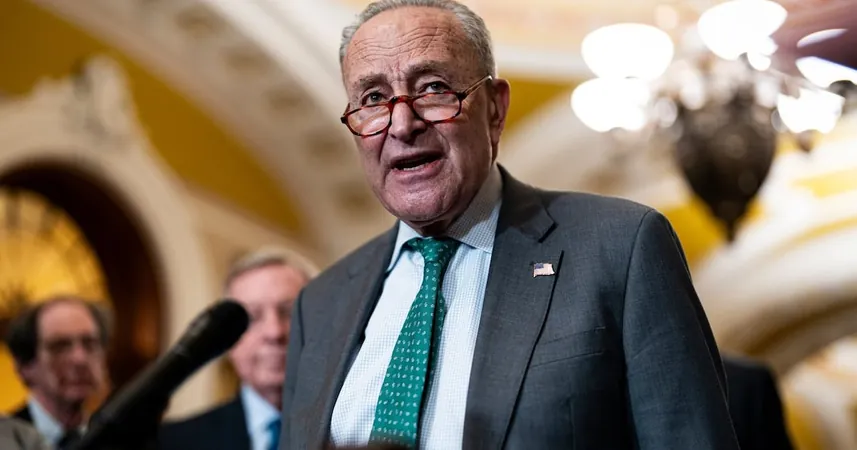
Canada's Tariff Tolerance: A Negotiation Tightrope with the U.S.
2025-07-16
Author: Liam
Ongoing Negotiations Over Tariffs with the U.S.
In a recent statement, Prime Minister Mark Carney revealed that the specifics of tariff acceptance in a new trade and security agreement with the United States are still up for discussion. This comes as negotiations with the Trump administration continue.
The Challenge of Tariff Reductions
Carney expressed skepticism about completely eliminating all U.S. tariffs on Canadian goods, acknowledging that some might remain even if a deal is reached. This admission marks a shift in tone, signaling the complexities involved in resolving the prolonged Canada-U.S. trade conflict.
Details Still Under Wraps
When pressed for details about which tariffs could be on the table, Carney opted for caution, stating that revealing specifics during negotiations could be counterproductive.
Recent Developments in Tariff Talks
The ongoing conflict began in March, with both nations imposing tariffs on various imports. Recently, President Trump signaled an intention to add a hefty 35% tariff on Canadian imports starting August 1, heightening the urgency for a resolution.
Potential Responses from Canada
In light of these threats, Carney was asked whether Canada might retaliate with new tariffs if American tariffs stay in place. He was ambiguous but noted that the final agreement would dictate their next steps.
Compromises and Criticism
Despite the tense negotiations, Carney has made concessions, such as canceling the proposed digital sales tax to regain momentum in trade talks—an action that drew criticism from opposition parties for appearing overly accommodating to Trump.
Focus on a Fair Deal for Canadians
Carney reiterated the importance of achieving a deal that benefits Canadian workers, emphasizing that the absence of an agreement reflects ongoing negotiations rather than shortcomings in Canada’s strategy. As discussions advance, the path to a favorable trade resolution remains fraught with challenges, with both countries needing to find common ground.









 Brasil (PT)
Brasil (PT)
 Canada (EN)
Canada (EN)
 Chile (ES)
Chile (ES)
 Česko (CS)
Česko (CS)
 대한민국 (KO)
대한민국 (KO)
 España (ES)
España (ES)
 France (FR)
France (FR)
 Hong Kong (EN)
Hong Kong (EN)
 Italia (IT)
Italia (IT)
 日本 (JA)
日本 (JA)
 Magyarország (HU)
Magyarország (HU)
 Norge (NO)
Norge (NO)
 Polska (PL)
Polska (PL)
 Schweiz (DE)
Schweiz (DE)
 Singapore (EN)
Singapore (EN)
 Sverige (SV)
Sverige (SV)
 Suomi (FI)
Suomi (FI)
 Türkiye (TR)
Türkiye (TR)
 الإمارات العربية المتحدة (AR)
الإمارات العربية المتحدة (AR)